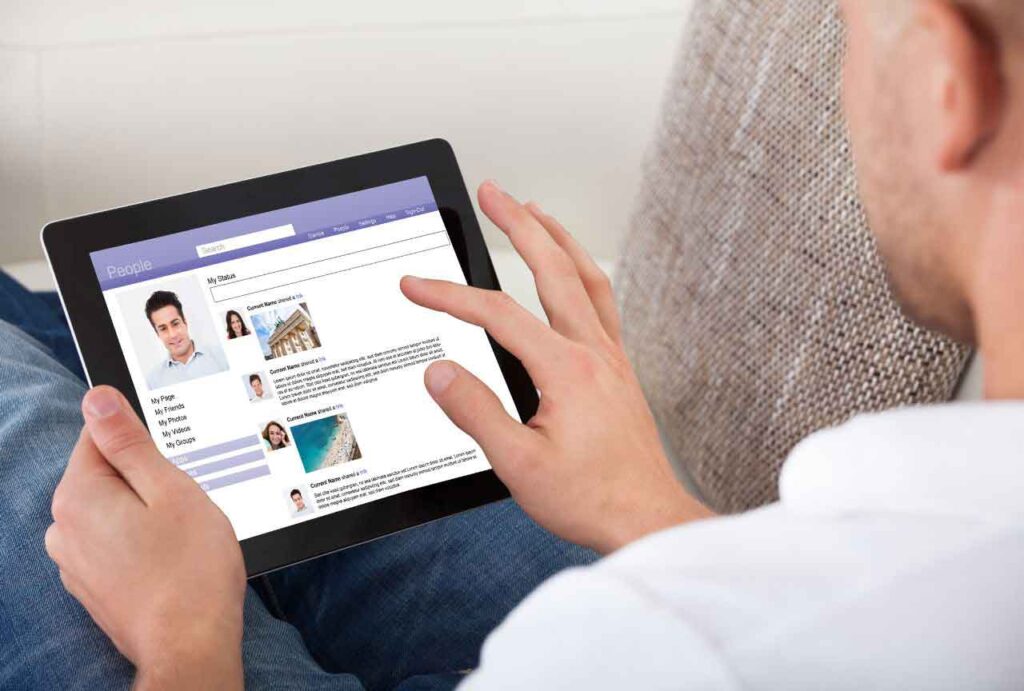Neediness? I’m not needy, I’m just passionate and interested!”. The line between expressing genuine interest and veering into the territory of neediness can be as delicate as a tightrope walk.
Understanding the nuances of conveying interest without giving off a scent of desperation is an art worth mastering. Many individuals, well-intentioned in their pursuit of recognition, find themselves grappling with the challenge of striking this delicate balance. It’s a scenario familiar to countless professionals who’ve, at some point, wondered, “How do I show interest without coming across as needy?”.
I. Understanding the “Needy” Perception:
So you want to express interest, but fear turning into “That Needy Person”? Let’s dissect the perception of neediness to avoid it like a social landmine.
Firstly, neediness in this context isn’t about basic human needs. Feeling loved, connected, and valued are natural desires. Neediness, however, crosses a line when these desires morph into excessive dependence and insecurity.
Here’s how neediness can manifest in relationships (professional or personal):
- Constant attention-seeking: Needy individuals may dominate conversations, demand instant replies, or bombard others with updates about themselves. This overwhelming behavior smothers genuine connection and pushes people away.
- Emotional manipulation: Guilt trips, jealousy, and possessiveness are tactics often used by those feeling needy. These emotionally manipulative behaviors create an unhealthy dynamic and erode trust.
- Lack of autonomy and self-sufficiency: Needy individuals may rely on others excessively for decisions, validation, and emotional support. This dependence hinders personal growth and burdens others.
- Ignoring boundaries and personal space: Neediness can lead to disregarding others’ privacy and comfort. Overstepping boundaries, making excessive demands on time, and intruding on personal space suffocate and alienate others.
Why is neediness perceived negatively?
- It creates an imbalance: Needy behavior places all the emphasis on one person’s wants and needs, neglecting the others. This imbalance breeds resentment and disinterest.
- It’s suffocating and overbearing: Constant attention-seeking and dependence become overwhelming, leaving little room for personal space and healthy growth.
- It undermines trust: Manipulative tactics and insecurity cast doubt on a person’s sincerity and intentions.
- It inhibits genuine connection: Neediness focuses on fulfilling immediate desires rather than building authentic bonds based on mutual respect and shared interests.
Remember, showing interest is positive, but when it crosses the line into neediness, it backfires. By understanding these red flags, you can express genuine interest in a way that captivates rather than repels.

Also Read: How To Adopt An Abundance Mindset And Avoid Scarcit
II. Cultivating a Strategic Approach to Showing Interest:
Now that we’ve demystified “neediness,” let’s explore actionable strategies to express genuine interest without the pitfalls. Remember, the goal is to cultivate mutually beneficial connections built on authenticity and respect.
1. Research and Preparation:
So you want to express genuine interest, but how do you research and prepare effectively? Here’s a breakdown to set you up for success:
A. Invest Time in Understanding Your Target:
In the pursuit of showcasing interest, the first step isn’t a dazzling email or a bold introduction. It’s about laying the groundwork: truly understanding the person or team you’re trying to connect with. This isn’t a mere formality; it’s the foundation for crafting authentic, targeted outreach that goes beyond generic flattery and resonates on a deeper level.
Let’s say you reach out to a potential mentor, eager to learn from their expertise. But your message mentions outdated projects and references irrelevant hobbies. It’s clear you haven’t done your research, and the impression you leave is one of superficiality and lack of genuine interest.
So, here’s how to invest time in understanding your target effectively:
- Become a detective: Utilize professional platforms like LinkedIn or personal ones like Instagram, company websites, and industry publications to gather information. Read their articles, blog posts, and social media updates. Uncover their past projects, recent achievements, and areas of focus.
- Seek the human element: Go beyond professional accolades. Look for shared interests, hobbies, or even alma maters. These hidden connections can add a personal touch to your outreach.
- Map the landscape: Identify key players in their circle. Understanding their team structure, their professional network, and any mutual connections can provide valuable insight and potential introduction points.
Remember, research isn’t a one-time activity. It’s an ongoing process that demonstrates your commitment and keeps your outreach relevant and dynamic.
B. Tailor Your Outreach: Crafting Messages that Connect, Not Confuse
With a solid understanding of your target in hand, it’s time to craft an outreach message that resonates. Gone are the days of generic templates and forced flattery. This is where your research shines, transforming your message from a mass email into a personalized conversation starter.
Think of it as building a bridge:
- The foundation: Start with a clear and concise introduction, stating your purpose and highlighting the reason for your contact. This provides context and avoids unnecessary confusion.
- The pillars: Weave in the threads of your research. Mention a specific article you enjoyed, a project that resonated with you, or a shared interest you discovered. This personalizes your message and piques their curiosity.
- The bridge itself: Offer value, not just pleas for attention. Share a relevant resource, ask an insightful question, or propose a potential collaboration. This demonstrates your expertise and initiative, turning the interaction into a mutually beneficial exchange.
Avoid these pitfalls:
- Generic greetings: Ditch the “Dear Sir/Madam” and address them by name. Personalized greetings show respect and attention to detail.
- Exaggerated compliments: Don’t gush about their “genius” or “visionary leadership.” Stick to genuine observations and specific compliments based on your research.
- Demanding their time: Avoid phrases like “I need your help” or “Can you give me a few minutes?” Instead, offer value upfront and propose a mutually beneficial exchange.
By tailoring your outreach, you move beyond the crowd and showcase genuine interest in a way that leaves a lasting impression. Remember, it’s not about bombarding them; it’s about building a bridge for a meaningful connection.

Also Read: How To Network And Build Relationships With Rich People
2. Targeted Communication:
Building meaningful connections requires deliberate and strategic communication. By focusing on these key principles, you can foster authentic relationships while avoiding the pitfalls of neediness:
A. Leveraging Existing Networks:
Instead of initiating cold calls, utilize your professional network or online platforms like LinkedIn to find established connections with the individuals or teams you wish to engage with. These introductions serve as a bridge, adding credibility and facilitating a more organic initial interaction.
B. Demonstrating Intellectual Curiosity:
Move beyond superficial banter and generic inquiries. Craft insightful questions that delve into their expertise, recent projects, or areas of shared interest. By showcasing genuine curiosity and a desire to learn, you establish a foundation for respectful dialogue and shared knowledge exchange.
C. Adding Value through Contribution:
Shift your focus from solely seeking personal benefit to actively contributing to the other party’s goals. Share relevant resources, offer insightful ideas, or propose collaboration opportunities. This proactive approach adds value to the interaction, highlighting your expertise and fostering a mutually beneficial relationship.
3. Cultivating Respect and Maintaining Boundaries:
Building enduring professional connections hinges on respecting both their time and personal space. Here’s how to navigate this interaction with grace and maintain a positive impression:
A. Strategic Follow-Up:
Avoid the pitfall of incessant contact. Space out your communications and respect their preferred response time. A well-timed follow-up message expressing gratitude and briefly reiterating your value proposition showcases continued interest without appearing pushy.
B. Gratitude and Value Proposition:
Always express sincere appreciation for their time and engagement. This demonstrates professionalism and acknowledges their contribution to the interaction. Briefly remind them of the value you bring, whether it’s your expertise, unique perspective, or potential for collaboration.
C. Upholding Professionalism:
Maintain a formal and respectful tone throughout your communication. Avoid informal language, excessive emojis, or emotional pleas. Remember, this is a professional interaction, and your demeanor should reflect your understanding of that dynamic.
D. Know Your Worth:
While respecting their boundaries, don’t undersell yourself. Be confident in your abilities and the value you offer. Strike a balance between expressing interest and presenting yourself as a capable and worthwhile professional.
Effective communication is a two-way street. By employing these strategies, you cultivate genuine connections built on trust, respect, and a shared desire for professional growth. This approach not only avoids neediness but also positions you as a valuable asset within your network.



